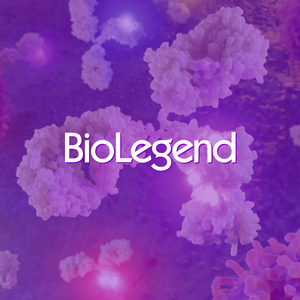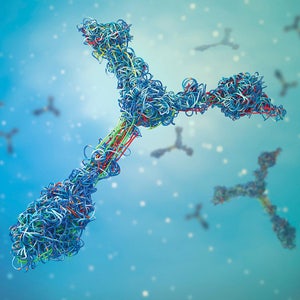

HTRF Human Phospho-AKT2 (Ser473) Detection Kit, 500 Assay Points


HTRF Human Phospho-AKT2 (Ser473) Detection Kit, 500 Assay Points






This HTRF kit is designed for robust cell-based quantification of AKT2 modulation, phosphorylated on Ser473.
| Feature | Specification |
|---|---|
| Application | Cell Signaling |
| Sample Volume | 16 µL |
This HTRF kit is designed for robust cell-based quantification of AKT2 modulation, phosphorylated on Ser473.



HTRF Human Phospho-AKT2 (Ser473) Detection Kit, 500 Assay Points



HTRF Human Phospho-AKT2 (Ser473) Detection Kit, 500 Assay Points



Product information
Overview
The Phospho-AKT2 (Ser473) kit is designed for the robust quantification of AKT2 modulation, phosphorylated on Ser473. Also known as protein kinase B (PKB), AKT is an oncogene playing a key role in controlling apoptosis, cell proliferation, transcription, cell migration, and glucose metabolism. AKT2 in particular plays a critical role in the insulin pathway, and thus has important applications in diabetes and metabolic research.
Specifications
| Application |
Cell Signaling
|
|---|---|
| Brand |
HTRF
|
| Detection Modality |
HTRF
|
| Lysis Buffer Compatibility |
Lysis Buffer 1
|
| Molecular Modification |
Phosphorylation
|
| Product Group |
Kit
|
| Sample Volume |
16 µL
|
| Shipping Conditions |
Shipped in Dry Ice
|
| Target Class |
Phosphoproteins
|
| Target Species |
Human
|
| Technology |
TR-FRET
|
| Therapeutic Area |
Metabolism/Diabetes
NASH/Fibrosis
Oncology & Inflammation
|
| Unit Size |
500 assay points
|
Video gallery

HTRF Human Phospho-AKT2 (Ser473) Detection Kit, 500 Assay Points

HTRF Human Phospho-AKT2 (Ser473) Detection Kit, 500 Assay Points

How it works
Phospho-AKT2 (Ser473) assay principle
The Phospho-AKT2 (Ser473) assay measures AKT2 when phosphorylated at Ser473. Contrary to Western Blot, the assay is entirely plate-based and does not require gels, electrophoresis or transfer. The Phospho-AKT2 (Ser473) assay uses 2 labeled antibodies: one with a donor fluorophore, the other one with an acceptor. The first antibody is selected for its specific binding to the phosphorylated motif on the protein, the second for its ability to recognize the protein independent of its phosphorylation state. Protein phosphorylation enables an immune-complex formation involving both labeled antibodies and which brings the donor fluorophore into close proximity to the acceptor, thereby generating a FRET signal. Its intensity is directly proportional to the concentration of phosphorylated protein present in the sample, and provides a means of assessing the proteins phosphorylation state under a no-wash assay format.

Phospho-AKT2 (Ser473) 2-plate assay protocol
The 2 plate protocol involves culturing cells in a 96-well plate before lysis then transferring lysates to a 384-well low volume detection plate before adding Phospho-AKT2 (Ser473) HTRF detection reagents. This protocol enables the cells' viability and confluence to be monitored.

Phospho-AKT2 (Ser473) 1-plate assay protocol
Detection of Phosphorylated AKT2 (Ser473) with HTRF reagents can be performed in a single plate used for culturing, stimulation and lysis. No washing steps are required. This HTS designed protocol enables miniaturization while maintaining robust HTRF quality.

Assay validation
Phospho AKT2 assay: Inhibitory effect of blocking peptide
SH-SY5Y cells were stimulated with human IGF-1 for 15 min. After stimulation, media was removed and cells were lysed with lysis buffer 1X for 30 min at RT under gentle shaking. 14 µL of lysates were transferred into 384-well sv white microplates and 2 µL of different concentration of blocking peptide specific for AKT2 or was added before adding 4 µL of the HTRF phospho-AKT2 (Ser473) detection reagents. The HTRF signal was recorded after an overnight incubation at room temperature.

Simplified pathway
AKT simplified pathway
AKT (or protein kinase B) plays a key role in controlling survival and apoptosis. This serine/threonine protein kinase is regulated by insulin and various growth and survival factors, to work in a wortmannin-sensitive pathway involving PI 3 kinase. When the Pleckstrin Homology (PH) domain of AKT binds to phosphoinositides, AKT can be phosphorylated by two different kinases, PDK1 at threonine 308 and mTORC2 (mammalian target of rapamycin) at serine 473, which switch on AKT activation.

Resources
Are you looking for resources, click on the resource type to explore further.
Atherosclerosis pathogenesis, cellular actors, and pathways
Atherosclerosis is a common condition in which arteries harden and...
Discover the versatility and precision of Homogeneous Time-Resolved Fluorescence (HTRF) technology. Our HTRF portfolio offers a...
This guide provides you an overview of HTRF applications in several therapeutic areas.
An in-depth review of molecular and cellular pathways
The maintenance of proteostasis, the biological mechanisms that control the...
A comprehensive listing of Type II diabetes pathways
Type II diabetes disease cases are constantly increasing, especially for...
Obesity is a complex condition characterized by excessive fat accumulation, posing significant health and socioeconomic challenges...
SDS, COAs, Manuals and more
Are you looking for technical documents related to the product? We have categorized them in dedicated sections below. Explore now.
- LanguageEnglishCountryUnited States
- LanguageFrenchCountryFrance
- LanguageGermanCountryGermany
- Lot Number14ALot DateOctober 14, 2027
- Lot Number12ALot DateApril 3, 2026
- Lot Number12BLot DateApril 3, 2026
- Resource TypeManualLanguageEnglishCountry-


How can we help you?
We are here to answer your questions.







































